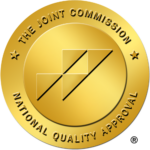Addiction Recovery 101: Choosing a Level of Care
There are so many unknowns when you first enter the world of addiction treatment. It feels overwhelming choosing a level of care, finding the right facility for your needs and feeling comfortable in your recovery.
Don’t let fear hold you back from getting clean from drugs and alcohol. Use this guide when choosing a level of care.
A team approach
When you’re thinking about starting addiction treatment it can feel like a lonely road ahead. This is often one of the last roadblocks people face before starting recovery. Thankfully, though, healing is never an isolated experience, and you’ll have a team by your side as soon as you get connected to professional treatment.
A treatment team can include any of the following:
- Doctor;
- Nurse;
- Psychologist;
- Counselor;
- Social worker;
- Psychiatrist;
- Other addiction specialists.
When you’re receiving care for an addiction, team collaboration can make a huge difference. Don’t forget that you’re also an essential member of your team with an irreplaceable role. Only you know how recovery is impacting your body, where your strengths lie and what motivates you best.
A continuum of care
Most treatment for addiction recovery follows a continuum of care model. This structure means that each level of need naturally flows into the next level in each direction. A continuum of care works like a spectrum, with more vigorous services at one end.
So, when someone is receiving the highest tier and intensity of intervention, after progress is made, he will move down the scale. Similarly, when a person is somewhere in the middle of the continuum of care and the addiction becomes more severe, she will find moving up a tier will meet her needs.
The five levels of care
The continuum of care requires concrete designations between levels, even if transitioning between levels is fluid. The American Society of Addiction Medicine has created five distinct levels of care. Most addiction treatment centers will operate using a spectrum similar to this.
1. Early intervention services
Early intervention places a focus on providing education and resources to those who are at risk of developing an addiction or have started using substances casually. These services are provided to individuals who have not developed a full-fledged addiction or are not eligible for a substance use disorder diagnosis.
2. Outpatient services
Outpatient treatment takes the form of counseling or psychotherapy, and often includes peer support groups. People who struggle with addiction but have mild and manageable symptoms generally partake in this caliber of treatment.
Outpatient services are non-residential, and occur on a less intense basis than intensive outpatient services. Sessions occur anywhere from every other week to meetings every weeknight. Generally, outpatient services are less than ten hours within each week.
3. Intensive outpatient/partial hospitalization services
Like outpatient services, intensive outpatient care can occur as an addiction worsens or as a person is progressing through recovery after inpatient services. Again, intensive outpatient treatment does not require overnight stays in a facility, but the amount of time increases from general outpatient treatment.
Most intensive outpatient or partial hospitalization programs (PHP) operate during school or work-week hours (between six and eight hours a day) and last for around two weeks. Participants in these programs do not require around-the-clock medical or psychiatric supervision.
4. Residential/inpatient services
Inpatient services are residential programs or detox centers, so individuals at this level of care will be monitored 24/7. The bulk of this treatment will still consist of psychotherapy and counseling, education and life support.
Residential services can span a wide range of time. Some programs last 30 days or less, others will extend for up to three months. Whether this level of intervention is appropriate will depend on each person’s individual needs, although this treatment is best for those who do not require medical attention.
5. Medically managed intensive inpatient services
Often, individuals will need intensive inpatient treatment after recovering from an overdose or when an addiction has escalated and withdrawal symptoms are painful or dangerous. The main purpose of this level of care is to prevent immediate relapse or permanent injury rather than introduce skills for long-term recovery.
More intense intervention generally includes more structure. Treatment is designed to prevent relapse in unique ways depending on where a person falls on the spectrum. Higher levels of care will use pain management and distraction to curb cravings, while outpatient care involves identifying, avoiding and managing triggers.
How long does treatment last?
According to the Psychiatry Journal, a continuum of care generally lasts for a minimum of three to six months. For the most reliable success in long-term recovery, 12 months of intervention for addiction recovery is recommended.
This span of time can include all five levels of care, starting with medically managed inpatient services. However, it’s likely that the more intensive intervention is necessary, the longer period of continuing services will be appropriate.
Where can I get started?
Finding the right place to heal from an addiction matters. That’s why you’ll want to check out Freedom Detox. Learn more and get in touch today.










